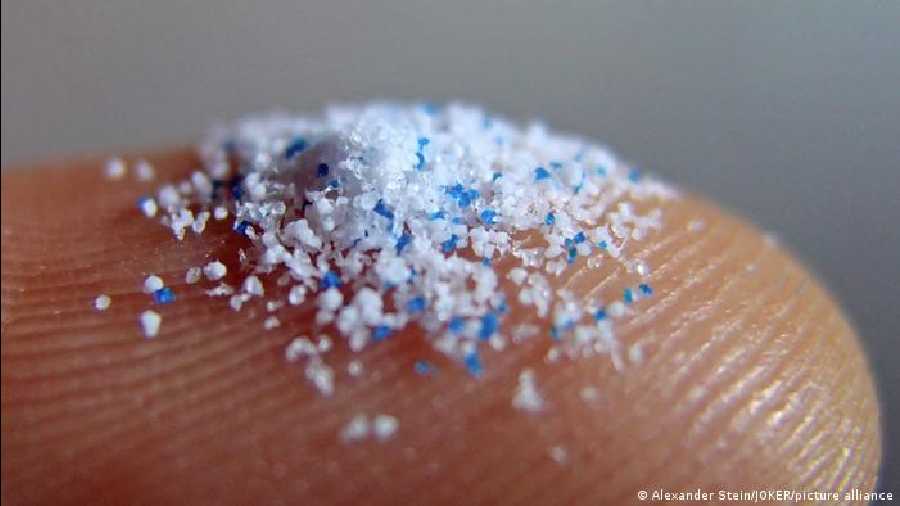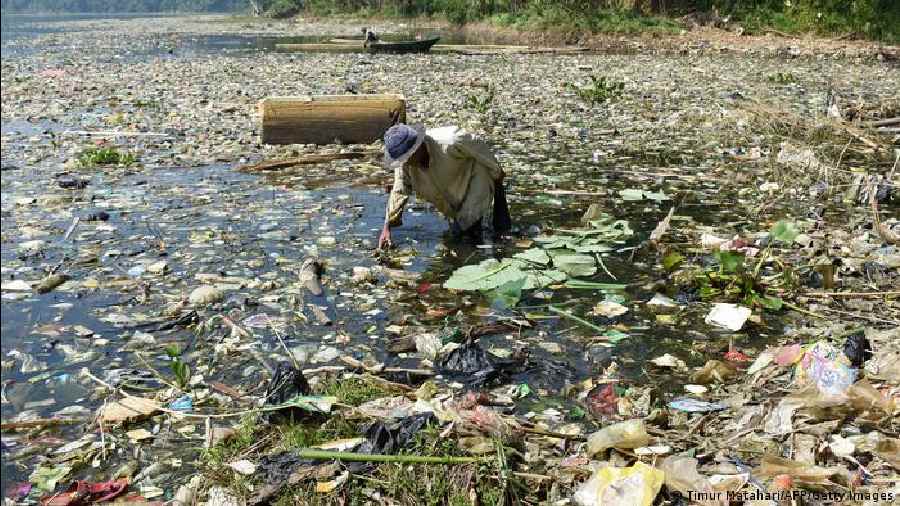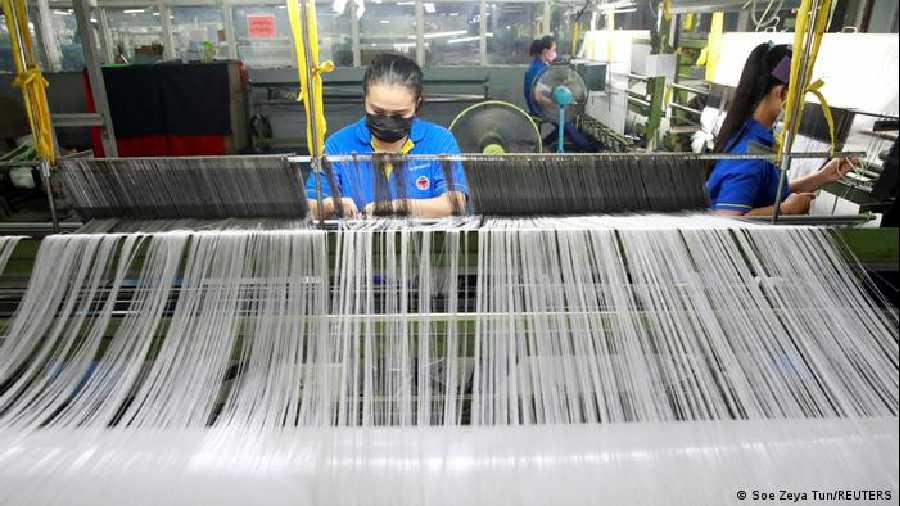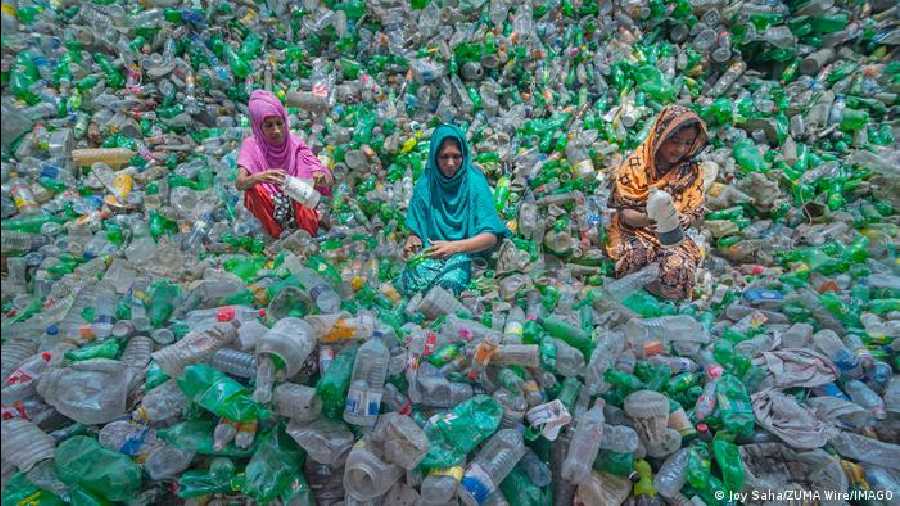Plastic has long had the planet in its grip. All too often it is found piled up on beaches and floating as "plastic islands" in the ocean. But it also clogs the stomachs of birds and other animals and has even made it into the human bloodstream.
To date, just 9% of the world's plastic has been recycled. Some 12% has been burned, and the rest has ended up on landfills or in nature.
But as dire as the situation sounds, there is light at the end of the plastic tunnel, writes intergovernmental economic organization, the OECD, in its new Global Plastic Outlook report. If countries around the world make a concerted effort.

Microplastics can enter the human body through food and water Deutsche Welle
Dim plastic prospects with 'business as usual' scenario
On our current course, however, plastic use will triple by 2060, and because the material is not biodegradable, so will the resulting trash. Microplastic pollution will increase significantly in every country too.
Rivers such as the Ganges in India and Ciliwung in Indonesia are already brimming with plastic trash. Unless we change our habits, the amount that ends up in nature will double and cause even greater harm to plants, animals and ecosystems, according to the report published today.
With 99% of plastics made from fossil fuels, the already considerable emissions created during the lifecycle of plastics will also more than double by 2060.
"It's clear that 'business as usual' in the way we use, produce and manage plastic is not possible anymore," Peter Börkey, OECD environmental policy expert and report co-author, told DW.

Rivers in many countries are already choking with plastic waste Deutsche Welle
The good news: Countries can work together to solve the problem
But the future is not set in stone.
Plastic use could fall a fifth by 2060 if the OECD's 38 member states, particularly those with high per-capita incomes like Germany, the USA and Japan, implemented far-reaching reforms. Such a move would also significantly reduce waste.
If non-OECD countries joined in, plastic waste could be cut by a third, even allowing for global economic growth. That means barely any plastic would end up in the environment, according to the report's authors.
But to reach those goals, nearly 60% of plastic waste must be recycled globally. The market share of recycled material will have to increase from the current 6% to 41%, while waste management systems need to be significantly improved.
OECD member states are the biggest global plastic consumers today. But by 2060, around half of plastic consumption will be in countries in Asia, the Middle East and Africa. These countries already see a high incidence of plastic ending up in nature.
"The most effective way to reduce plastic in the environment is, first and foremost, helping developing countries to improve their waste management systems," said Börkey. "And this is where OECD countries can help."
A tax on new plastic
The scenarios and calculations the authors suggest are ambitious and include introducing a tax of $1000 (€931) per ton of newly manufactured plastic. The idea is to push businesses to seek out alternative materials.
"That will have a significant impact on demand for plastic," said Börkey. "We have to create situations where alternatives to single-use plastics become viable."
Despite its problems, plastic is still an enormously useful material. It's used in wind turbines and electric cars. According to Börkey, we don't have to replace plastic where there are no good alternatives or where its use is sustainable.
The aim is to reduce the kinds of plastic that usually end up in the environment.
"That is typically packaging. It is about one third of the plastic that we use," he said.

A woman weaving personal protectective equipment from upcycled plastic Deutsche Welle
Fixed recycling quotas would help to reduce waste and production of virgin plastic. So too would introducing legislation to make manufacturers produce packaging, clothing, and vehicles in a more sustainable way and ensure electronic goods are easier to repair, prolonging their life span.
These are all ideas connected to the circular economy, which aims to create a system that avoids waste as much as possible and reuses resources in new products.
Small first steps to tackle to plastic crisis
In March 2022, 200 countries agreed for the first time to set mandatory rules and instruments for plastic production, consumption, and disposal by 2024.
Conservation organization WWF called the move historic. However, states still have to hammer out the details. The extent to which any rules would be binding has also yet to be determined.
In 2021, the European Union banned a number of single-use plastic items, including disposable cutlery and dishes, to-go cups, Styrofoam containers, and straws.
Regulating plastic consumption worldwide, as proposed by the OECD authors, would cost less than 1% of global GDP by 2060.











